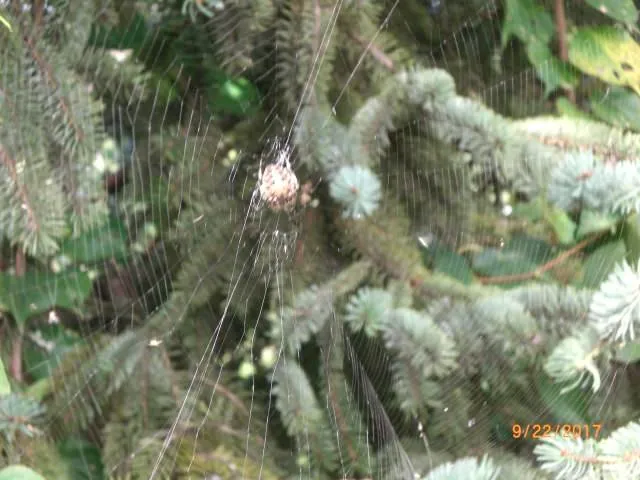I am petrified of spiders, so you can just imagine how difficult it was for me to take these photos. This particular spider is an Orb Weaver Spider in the family of Araneidae. There are over 180 different species of the Orb Weaver Spiders in North America and over 3,500 different species in the family Araneidae worldwide. They build round webs to catch their prey and their webs can span several feet in width. The orb weaver spider coats the silk threads of their web with a sticky substance, which enables them to catch flying insects in their web. The prey get stuck in the sticky substance and can't escape.

They feed mostly on insects, as well as other small organisms. The orb weaver has poor vision so it relies on vibrations of their web to alert them that prey is in their web. They sit in the middle of their web with their head facing downward, showing its rounded abdomen. If you see one of these spiders in the web, it is usually a female. Males hardly ever build a web because they are too busy looking for mates.

Females don't search for their mates. They just wait on their web or close by, letting the males come to them. Males are smaller than females, and might become the female's next meal after mating. Female Orb Weavers lay eggs in clutches, encased in a sac. Each sac will contain several hundreds of eggs. In areas that have cold winters, she will lay a clutch of eggs in the fall, wrap it in thick silk, and she will die after the first frost. The babies will hatch in the spring. The average life of an orb weaver is approximately one year.

What I found most interesting about these spiders is that they build a new web every day and do not leave their old webs behind. So what do they do with their old webs? They eat them, and turn them into new silk to build their new webs. Nature never ceases to amaze me!

Orb Weavers vary in color and size. They can be brown, black, or brightly colored. Many have very long legs which can be hairy and spiny. They are beneficial spiders because most orb weavers are nocturnal and they lower the mosquito population. Orb weavers have venom but they usually don't bite. If they do bite, it will be mild.
Information Source: dkfindout.com, thoughtco.com
Image Source: 100% own work.